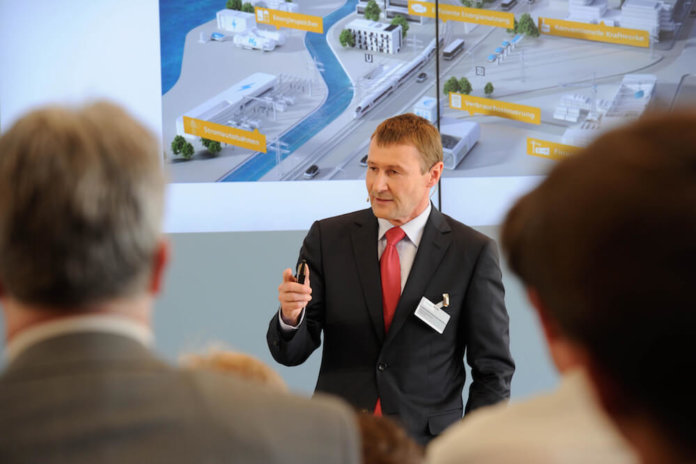
When considering suitable birthday presents, what do you get for the 200-year-old who has everything? This is the question leaders of government, business, and technology must have asked themselves when they gathered in Germany on December 13, 2016 to celebrate the 200th birthday of inventor, entrepreneur, and business leader Werner von Siemens.
If the name rings a bell, it’s likely because today Siemens is a global behemoth in the fields of power generation technology, industrial and buildings automation, and medical technology, just to name a few. Their 2017 revenue fell just north of €83.049 billion with an operating income of more than €8.309 billion. Siemens employs more than 372,000 people in just about every corner of the globe.
And yet, the reason so many dignitaries gathered to celebrate his birthday well over a century after the man passed away has less to do with the impressiveness of the conglomerate that bears his name and more to do with the role he played in forwarding the electrical age. Werner von Siemens didn’t invent electricity but he may have done more to invent its practical application than anyone else at the time.
This is something he foresaw as it was developing. “Technology now has the means to generate electric current of unlimited power cheaply and conveniently wherever work is available. This fact will be of considerable significance in many technological fields,” he once wrote.
Early Days
Siemens was born in Lenthe, which is today part of Gehrden, Germany. He grew up, like many others at that time, in a mostly agrarian lifestyle, working on the family farm with his parents. Siemens was a capable student and had entertained the notion of continuing his studies at an academic institute however family debt derailed those plans. Instead, he attended the Prussian Military Academy’s School of Artillery and Engineering in 1835.
What he learned in this capacity over the next three years would forever change the face of the modern industry. Siemens soon found himself quite adept at the newfound technology known as electricity. During this time, he invented electrically charged sea mines for the Prussian Navy.
Soon after he would experiment with different electrical inventions, each with a very pragmatic purpose. When he saw that Samuel Morse had invented the electric telegraph, he immediately sought to improve upon its functionality. In the mid-1840’s he succeeded in doing just that as he eagerly reported back to his brother Wilhelm.
“My telegraph uses only one wire, can be played with keys like a piano, and combines the greatest reliability and such speed that one can telegraph nearly as fast as the keys can be pressed. Yet it is ridiculously simple and quite independent from the strength of the current.”
A Company is Born: the Origins of Siemens
To manufacture this newly invented product, Siemens turned to master mechanic Johann Georg Halske. Together they would form the Siemens & Halske Telegraph Construction Company in October 1847.
This company was responsible for bringing telegraph technology to many parts of Europe and Asia. One of their most significant projects was laying the Indo-European Telegraph line. According to a 2008 book Werner Von Siemens Recollections, “…the Indo-European Telegraph line linking London and Calcutta remained in operation until 1931 as one of the world’s fastest, most reliable and most profitable telegraph systems.”
The company would also be responsible for bringing telegraph capabilities across Russia. The Russian business eventually became a separate division within the company.
How Werner von Siemens invented the Dynamo and More
Not one to rest on his laurels, Siemens would make his most significant breakthrough almost two decades after he invented the improved telegraph machine, According to Recollections, “In 1866, he achieved what is probably his most important contribution to electrical engineering, when he built on Michael Faraday’s work to discover the dynamo-electric principle, thus achieving the breakthrough that enabled electricity to be used as a power source.”
In a December 4 1866 letter to Wilhelm, he addressed the potential impact this could have on the world. “If the design is carried out correctly, the effects must be colossal. The matter is very capable of expansion, and may open up a new era in electromagnetism. […] It will make magneto-electricity very cheap, while lighting, electroplating, and so forth – even small electro-magnetic machines that obtain their power from larger ones – will become possible and useful.”
The spin-off effects quickly reshaped the way people lived their everyday lives. Siemens & Halske would invent and introduce the world’s first electric railroad, the first electric street lighting in Berlin’s Kaisergalerie, and in 1881, the first electric elevator.
According to Recollections, “In 1892, Siemens & Halske alone was building 1,000 dynamos a year and generating sales of nearly 20 million marks. The company had 6,500 employees worldwide, 4,775 of them in Germany.”
The Werner von Siemens Legacy
If Siemens had attended his 200th birthday celebration, he would have been very proud of what his family business has accomplished all these years later. But it wouldn’t be the wealth and affluence that has been accumulated that gave him the most satisfaction. Making money was never his top priority.
“I view business only secondarily as a way of making money,” he once wrote. “for me, rather, it is an empire that I have founded, and that I would like to leave to my descendants undiminished, so that they may continue to work in it.”
Mission accomplished.









